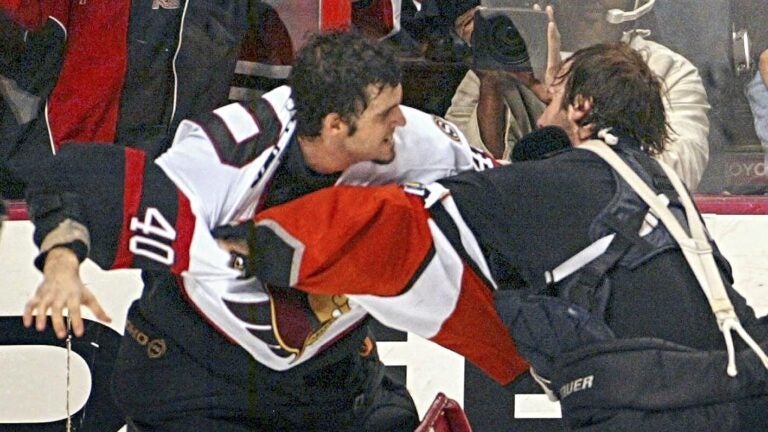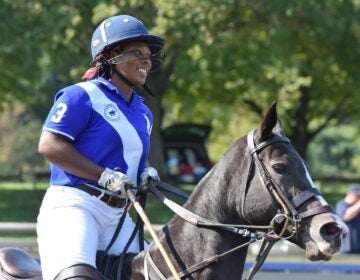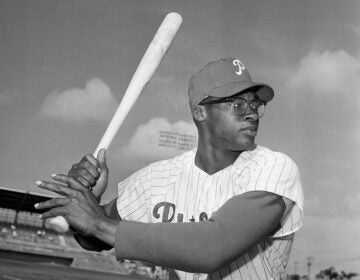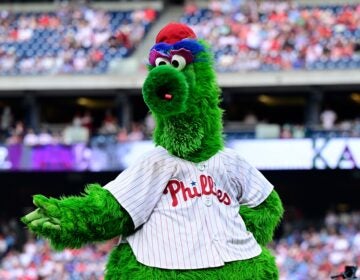20 years since NHL’s record-setting Flyers-Senators brawl, fighting is down across the league but not going anywhere
There are still roughly 300 each season, or one every four to five games.

Ottawa Senators goalie Patrick Lalime (40) and Philadelphia Flyers goalie Robert Esche join in the fight-filled final 1:45 of the third period of an NHL hockey game March 5, 2004, in Philadelphia. (AP Photo/George Widman, File)
Chicago’s Marcus Foligno took a hit, delivered one of his own to Minnesota’s Jarred Tinordi, and the two big guys dropped the gloves. Outdoors in front of 82,000 people in the Meadowlands, it took even less for Matt Rempe and Matt Martin to spice up the Rangers-Islanders showdown with a fight.
When Morgan Rielly cross-checked Ridly Greig for firing a slap shot into an empty net? Some pushing and shoving. Nothing more.
“How there wasn’t a brawl there, I don’t know how everyone didn’t start fighting,” wondered Todd Simpson, a 50-year-old retired player who piled up more than 1,300 penalty minutes in 580 NHL games. “That should’ve been a big fight.”
All of these situations were over the past month alone, riveting reminders that fighting is alive and well in the NHL even if it is diminished in many ways. It has been 20 years since Simpson and his Ottawa teammates got into a fight fest at Philadelphia, a game that still holds the NHL record with an astounding 419 penalty minutes. Of 40 players who suited up, 23 got at least two minutes of penalty time. Many got far more.
Those kinds of massive clashes are long gone, faded like the cheap shots and blood in “Slap Shot.” Like the beloved movie, however, fighting is warmly remembered, even desired, by many fans of the game and cheering on the brawls remains common. Those fans need not worry: Even in the NHL, which has fewer and fewer spots for goons these days, fighting is rare but certainly not gone, with a fight coming roughly every four or five games across the league.
Many see a permanent place for it in a sport that values standing up for teammates, even as they have watched some of the biggest fighters left shells of themselves by repeated blows to the head.
“It doesn’t happen often, but you still have to have it,” said Vancouver Canucks coach Rick Tocchet, whose 237 career fights rank 21st all-time. “When I played, you could really use as intimidation. You can still use it a little bit today but not as much. The staged fighting and all that stuff, that doesn’t work anymore. But there is a time and place for it.”
Fighting on the wane
The NHL does not publicly list penalties by type, including fighting and other major infractions. According to HockeyFights.com, there have been 219 fights this season through Monday with 63 more projected before the playoffs begin for a total of 282, which would be a sharp drop from the 789 in 2003-04. That is a 200% decrease over 20 years and significantly down from 645 as recently as 2010-11.
Rule changes are part of the reason. The institution of the salary cap in 2005 made it more difficult for a team to pay a player whose skills were limited to throwing punches and protecting stars. In 2013, it became illegal to take a helmet off to fight and mandatory visors were grandfathered in.
“It’s obviously evolved a lot where guys like myself back in the day no longer exist — one-dimensional fighters no longer exist,” said Riley Cote, who fought 50 times in 156 games with Philadelphia from 2007-10 and countless other times in the minor leagues. “It’s been a natural progression. … I’m not sure at the NHL level they’ll ever fully phase it out, but they’re doing a pretty good job of trying.”
No one expects a fighting ban, like the ejection and suspension policies that exist in college and internationally. NHL Commissioner Gary Bettman has said the fighting helps keep tensions from boiling over.
“Fighting, in the spontaneous sense, tends to act as a bit of a thermostat when things happen in the course of the game,” Bettman said in 2013. Discussing a fight between Jarome Iginla and Vincent Lecavalier, Bettman said, “I’d rather them be punching each other than swinging sticks at each other.”
Will fighting survive?
A 2011 survey by the NHL Players’ Association and CBC found that 98% of players at that time didn’t support the total elimination of fighting. A vast majority of those players are now out of the league, replaced by a generation that has made hockey faster and more skilled than ever — but still willing to drop the gloves on occasion and wanting that option.
“It always needs to be in the game,” said St. Louis Blues captain Brayden Schenn, who has fought twice this season but never more than four times a year as a professional. “You need guys to police it themselves, and if you’re going to run around and make a big hit, you’ve got to know that sometimes you’re going to have to deal with the consequences.”
That is certainly the opinion of Steve Oleksy, who HockeyFights.com credits with 107 bouts at various levels, including the NHL. He is 38 and retired and, after at least a couple of concussions and other wear and tear, is sometimes irritated in noisy places. Long drives and playing recreational sports is hard on his hands, which delivered hundreds of punches over the years.
He believes fighting will be virtually extinct a decade from now.
“I think it declines exponentially, but I also think the definition of a fight has changed so much,” Oleksy said. “The number of actual punches, actual fights — what we would deem a fight back in the day — I just don’t think that’s there, either. And I think with that comes the rise in incidents like the cross-checking incident, slashing, two-handers, things like that.”
Oleksy and many others point to junior hockey and even younger levels of hockey banning or at least discouraging and not teaching fighting as a bellwether for where things are going: Fewer players knowing how to, or being willing to, fight.
Fighting’s legacy
Like many sports, hockey is facing the fallout from decades of its players suffering concussions and other traumatic brain injuries when safety wasn’t the top priority it is now.
Patrick Sharp, who fought a handful of times as a player and is now in the Flyers’ front office, said he cringes when he sees a player’s helmet come off taking a heavy punch or banging their head on the ice. It’s what happened to George Parros during a fight in 2013 that left him unconscious after falling face first.
The deaths of old-school enforcers like Derek Boogaard and Bob Probert, who were posthumously found to have chronic traumatic encephalopathy, or CTE, has changed some minds when it comes to glorifying fighting the way it used to be. Oleksy contends that heavyweights of that vintage are no longer in the game and the risk of serious injury is much less now.
Dan Gallant, who has run HockeyFights.com since 2016, understands the business aspects of the decline of fighting and believes it to be cyclical. Now, general managers are looking for the next Milan Lucic or Tom Wilson — the big guy who can play hockey first but also can drop the gloves.
“The types of players that teams are going out and looking for to create that championship team have just kind of evolved,” Gallant said, confident fighting will never totally disappear. “Who knows what tomorrow might bring, but I do believe that the players that played the game before, being in the game now and the players that are currently here will make sure that fighting does stay in some form or fashion.”
WHYY is your source for fact-based, in-depth journalism and information. As a nonprofit organization, we rely on financial support from readers like you. Please give today.






